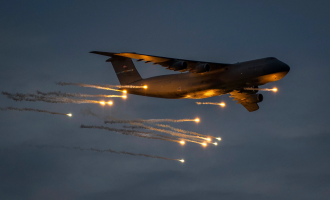According to Turkish media articles, Turkish warships will be equipped with air defence missiles with a reported strike range of 100 km. The procedures for integrating these weapons into the Turkish fleet have begun with the help of the Turkish defence company Roketsan.
The Turkish Ambitions
With Greek French-made Rafale fighters being integrated one by one into the Greek air fleet, it is logical for the Turks to see increasing threats on the Aegean horizon. Especially if we acquire the state-of-the-art F-35 fighters from the Americans, our advantage in the skies will be even greater.
This is why the Turks are increasing their air defence capabilities. This year, the TCG İSTANBUL (F-515), the first ship of the Instabul class of frigates of the MİLGEM program, is scheduled to enter service. Following the embargo imposed on Turkey for air defense missiles and vertical launch systems, the Turkish defense company Roketsan has undertaken to develop both of these systems domestically.
In this context, the company developed the National Vertical Launch System (MIDLAS) and integrated it into the Instabul frigate after ground launches. They then modified the HİSAR-O RF medium-altitude air defense missile to make it compatible with the MIDLAS launcher.
According to Turkish reports, it is estimated that tests with the MIDLAS system and HİSAR-O RF missiles will soon be conducted by the Turkish frigate TCG İSTANBUL.
They will modify the SİPER Product-1 missile
The Turks say that the HİSAR-O RF missile has a range of about 35 to 40 km, but as mentioned above they want to integrate a longer-range anti-aircraft missile of about 100 km on the Turkish warship. For this they intend to modify the SİPER Product-1 missile, a new Turkish air defence missile.
The modified version of the SİPER Product-1 is planned to be compatible with the MIDLAS vertical launcher, which means it will be able to be launched from Turkish warships. The ultimate goal of the Turks is to make the SİPER Product-1 the longest-range air defense missile in the Turkish navy.
However, the Turks have a long and difficult road ahead of them. First, several changes and adaptations must be made to the weapon, both in its hardware and in the material system. The Turks are also preparing an air-launch version of the SİPER Product-1 missile, which is expected to enter service in 2023 to 2024.
Thus, the Greek forces should prepare for this eventuality, i.e. the integration of a missile with such a range by the Turkish fleet. It is certainly a new threat, but the capabilities of the Greek air force have increased dramatically in recent years.





